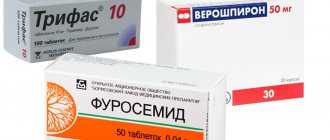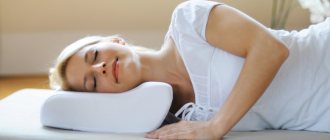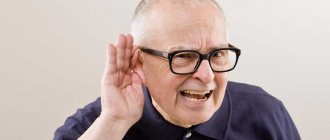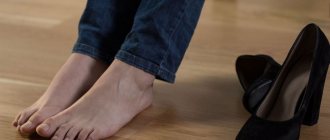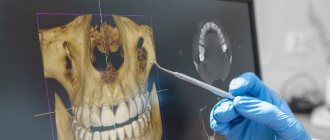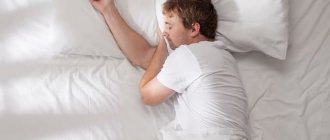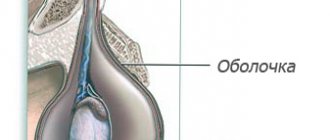Swelling of the legs, unfortunately, is well known to many. The legs swell and increase in volume. This happens because excess intercellular fluid accumulates in the tissues. Normally, the volume of fluid in the body is constant: as much as it enters the body, so much should be excreted. If fluid is retained in the body (and this excess volume can be measured in liters), edema occurs. The formation of edema can also be caused by fluid redistribution (disruption of the normal distribution of fluid throughout the body).
The tissues of various organs and parts of the body can swell, but most often it is the legs that suffer (primarily the ankles and shins). This is explained, firstly, by the fact that the legs bear the maximum load (they have to bear all of our weight - if we stand or walk; hence, long standing work or prolonged walking are factors contributing to swelling of the legs); secondly, the legs are the lowest part of our body; gravity helps the fluid descend here and prevents its outflow.
Swelling of the legs is not always obvious. Its first manifestation may be the appearance of a sock elastic mark on the ankle. At the next stage, the usual shoes become tight. Women notice that the straps of their sandals begin to “sink,” as it were, sinking into loose and soft fabric. Under certain circumstances, the legs can swell even in a healthy person. As a rule, swelling is observed in the evening, as a result of the stress placed on the legs during the day. However, if swelling occurs regularly or persists constantly, you should consult a doctor. Edema is a symptom of a wide range of diseases, many of which are very serious and require immediate treatment.
Types of swelling on the legs
Edema is classified into several types, depending on the reasons that caused it: • Congestive . They often form when vascular permeability increases, with excess pressure in the capillaries, which accompanies thrombophlebitis and varicose veins. In a healthy person, venous blood flow is directed under pressure from bottom to top; venous valves are responsible for this, which prevent reverse blood flow. The contraction of the muscles in the legs during movement creates a pumping effect. If this physiological mechanism is disrupted, the valves of the veins begin to allow blood to flow in two directions (not only up, but also down under the influence of gravity). As a result, stagnation occurs in the veins, venous pressure increases, and their walls lose tone and become thinner. As a result of thinning of the vessels, fluid from them penetrates into the tissues, causing swelling. In addition, congestion thickens the blood and causes excessive blood clots. • Hydromic . They are caused by the accumulation of excess fluid as a result of kidney disease. A decrease in their filtering abilities and damage to the tubules leads to a gradual movement of fluid from the bloodstream into the tissues. • Neuropathic. This type of swelling is typical for people who suffer from diabetes or alcoholism. The pathology can be caused by several factors. • Cachexic . They appear as a sign of nutritional deficiency. These are caused by poor protein nutrition, malignant neoplasms, and chronic anemia. • Allergic . The mechanism of their action is related to the body's reaction to allergens. This swelling develops rapidly and is accompanied by itching and redness of the skin. However, with correct treatment, it also quickly disappears. • Mechanical . They arise as a result of injuries as a response to damage to soft tissue structures, bone tissue, or compression of blood vessels. Sometimes mechanical swelling in the legs appears due to tumor processes. Regardless of the cause or type of swelling, a thorough examination and competent therapy are required.
Prevention
Swelling cannot always be prevented, since it can occur under the influence of uncontrollable factors. There is no way to prevent a bruise or insect bite. But in general, maintaining hydrobalance in the body is easy:
- Observe the drinking regime: fully quench your thirst, but do not drink more than you should.
- Stick to a diet during the hot season: minimize the consumption of salty and spicy foods, eat more fruits, drink tea with lemon instead of coffee.
- Arrange water treatments: contrast showers, foot baths.
- Move more: walking, swimming, aerobics do not allow fluid to stagnate.
In summer, you should avoid tight, high-heeled shoes. It is useful to periodically place your feet on an elevation so that fluid concentrated in the lower part of the body drains. There is no need to abuse medications. Urinary and antihypertensive drugs should be prescribed by a doctor. Any diseases that have a similar symptom must be treated in a timely manner.
Tokareva Lyudmila Georgievna, therapist, medical offices 36.6.
THERE ARE CONTRAINDICATIONS, BEFORE USE YOU MUST CONSULT WITH A SPECIALIST
What to do with swelling
If swelling develops, especially if it is chronic, you should immediately consult a doctor. To establish the true cause of fluid accumulation, specialists will definitely prescribe a wide range of studies. As a rule, diagnosis begins with a physical examination of the patient and collection of anamnesis, after which the patient undergoes tests and, if necessary, undergoes instrumental examinations.
• General and biochemical blood tests show the level of red blood cells, hemoglobin, ESR, cholesterol. This is necessary to exclude atherosclerotic vascular lesions and gout. • Blood sugar test to rule out diabetes. • Urinalysis to quantify protein levels. • Hormonal tests. • Ultrasound and electrocardiography to detect heart and vascular diseases.
After general examinations, the doctor can refer the patient to specialized specialists for additional diagnostics if certain pathologies are suspected. For example, if varicose veins are suspected, an ultrasound scan of the veins in the legs may be prescribed. In any case, diagnosis and therapy should be carried out exclusively by a doctor. It is important to eliminate not only swelling, but the underlying disease that caused it. The type (drug or non-drug, surgical, conservative) and intensity of therapy are also selected by a specialist. For example, for heart or kidney disease, certain diuretics are prescribed.
When it comes to varicose veins, the basic drugs are venotonics or phleboprotectors, which correct disturbances in the functioning of the venous circulatory system, strengthen blood vessels and restore venous flow. Special ointments and gels are also used that reduce skin sensitivity and discomfort in areas of swelling. In some cases, wearing compression garments is indicated to relieve symptoms. In the later stages of varicose veins, the problem can only be solved through surgery - for this, phlebectomy, sclerotherapy or EVLO (endovasal laser obliteration) is prescribed. However, in some cases it is possible to get rid of swelling without medication or surgery.
Osteopathy is a system of diagnosis and treatment of diseases of the musculoskeletal system, internal organs and systems without drugs. It is based on the anatomical-functional unity of the body and uses manual methods that restore the body's ability to heal itself.
Changes in the legs can be caused by weakness, overexertion, muscle or joint stiffness. The osteopathic correction scheme depends on the complexity, severity of the pathological process and the root causes that caused it.
In the initial stages of the disease, osteopathic manipulations help avoid the progression of leg disease, preventing the need for drug therapy and surgical intervention on the legs.
Osteopathic medicine views the human body as a single system that constantly adapts to new conditions. When any organ is ill or injured, other systems regulate and compensate for its functioning, which causes pain, swelling or inflammation.
Osteopathic treatment of swelling at the Quality of Life clinic is aimed at normalizing metabolism and digestive processes, which has a beneficial effect on the health of the entire body as a whole. Osteocorrection affects all systems, normalizes their functioning and brings them to a natural state. It allows you to effectively eliminate all negative phenomena, including swelling, shortness of breath, heartburn, disturbances in the gastrointestinal tract and the musculoskeletal system. Osteopathic medicine has no contraindications and can be used by both pregnant women and children.
Our doctors use gentle techniques that relieve tension, normalize blood circulation and lymph flow in the legs, improve vascular tone, provide lymphatic drainage and reduce fluid accumulation. In addition, this impact:
• relaxes muscles and fascia; • reduces or completely eliminates pain; • normalizes metabolism and hormonal levels; • restores anatomical mobility of joints.
Work is also carried out at the level of the diaphragm - thoraco-abdominal and pelvic. This normalizes pressure in the abdominal cavity, restores the functionality of all organs and systems, including blood vessels, which, due to disorders, are forced to work harder. As a result, the entire body is brought into a state of harmonious balance, which has a positive effect on the hormonal and psycho-emotional background. Working with soft tissues normalizes blood and lymph flow. This improves the nutrition of bones and joints, which do not have blood vessels, so the main source of nutrients in them is only the surrounding tissue. Improving bone nutrition eliminates pathological processes faster.
Treatment with lymphatic drainage massage is highly effective. It improves lymph flow, accelerates metabolic processes, relieves swelling and stabilizes the functioning of the central nervous system. This method is combined with other physiotherapeutic procedures - physical therapy, kinesiological taping, compression therapy.
Complex therapy, combining different methods, promotes a speedy recovery by reducing inflammation and swelling of tissues, improving blood circulation at the site of inflammation. As a result, recovery occurs much faster. Preventive courses every six months reduce the likelihood of exacerbations of swelling in the legs. The combination of osteopathy, manual therapy, kinesiotherapy and exercise therapy forms new motor patterns in the legs, stops the progression of diseases, prevents exacerbations and improves the quality of life. The set of physical exercises is selected individually by the attending physician, but even if you do simple movements correctly, they will have results.
Diagnostics
Experienced phlebologists at the Yusupov Hospital establish the cause of edema already at the first examination, taking into account the type of edema, its location (on the ankles, calves, ankles, feet), consistency and degree of mobility.
To confirm the diagnosis, patients are prescribed a comprehensive examination using ultra-modern diagnostic equipment at the Yusupov Hospital. In case of edema, the following laboratory tests and instrumental studies are recommended:
- general and biochemical blood tests, which allow you to determine the level of glucose, protein, as well as other vital indicators;
- electrocardiograms of the heart, echocardiography - to identify or exclude heart failure;
- Doppler examination of leg vessels - to detect inflammatory processes and blood clots.
Based on the diagnostic results, an individual treatment strategy for the underlying disease is developed for each patient using the latest techniques that guarantee high efficiency.
Recommendations
To achieve and maintain the effect, the action plan, in addition to the main therapy, may include compliance with certain lifestyle recommendations. These include: • Do not sit for a long time in one position with your legs tucked. • Change shoes frequently (at least 1-2 times throughout the day). • Periodically massage your feet using rubbing or pinching movements. • Balance your diet by adding foods with potassium and reducing your intake of sodium-rich foods. • When sleeping, place a special cushion or a regular pillow under your shins so that your lower extremities are above the level of your heart. Before going to bed, you need to raise them and keep them in this position for 5-10 minutes to relieve accumulated fatigue and tension. • In the early stages of varicose veins, physiotherapy, diet therapy and physical therapy are very useful, which can only be done under strict medical supervision.
Unfortunately, with an advanced disease, it is not possible to limit yourself to just lifestyle changes or physical activity - edema requires therapy. Therefore, you need to consult a doctor in a timely manner, preferably at the earliest stages of the development of the pathology, so that all the unpleasant sensations in the legs go away and your gait becomes light and relaxed again. Then the treatment will be effective, and the chances of a full recovery will be as high as possible.
Similar articles:
- Directions
- Specialists
- For visitors
- Articles and videos
ONLY UNTIL DECEMBER 29!
20% DISCOUNT ON CLASSES ON THE REDCORD SUSPENSION SYSTEM
Classes are conducted by instructor-methodologist Osipova Maria.
REDCORD allows you to eliminate muscle imbalance by relaxing some muscles and stimulating others. This allows you to resume the motor pattern and return the patient to normal functioning!
